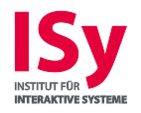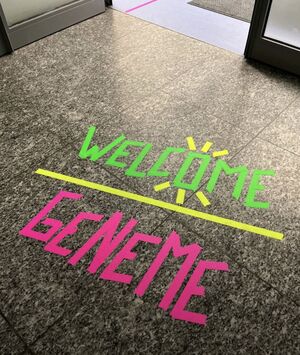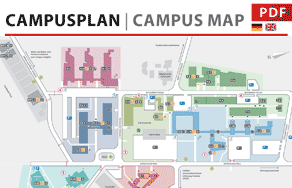Who are you, and what kind of conference was this?
I’m Anna Lena Möller, and I work as an Instructional Designer at the Institute for Interactive Systems at Lübeck University of Applied Sciences. From September 17–19, 2025, I attended the GeNeMe Conference at TU Dresden, where I presented a practical contribution.
The conference series “Communities in New Media” (GeNeMe) has been organized for over 25 years by TU Dresden, the Center for Interdisciplinary Digital Sciences (CIDS), and the Center for Open Digital Innovation and Participation (CODIP). It serves as a forum where academia and practice meet across disciplinary boundaries.
This year’s theme was “AI & Humanity: Technology in Social Responsibility.” A highly relevant focus—AI is increasingly shaping how we work, learn, and organize ourselves. As a result, existing digitalization efforts are coming under pressure, but at the same time, new opportunities and possibilities for action are emerging. Central questions included:
- What ethical and societal challenges arise from AI?
- How can we design digital communities that preserve humanity and participation?
- What political and regulatory frameworks are needed to ensure safe and inclusive digital spaces?
How were you able to contribute to the event?
In my presentation, “Prompt, Process, and Person: Practical Insights for the Reflective Use of AI in Instructional Design,” I introduced a concrete example from the European Digital Innovation Hub (EDIH.SH) research project and linked it to broader reflections on how workflows, collaboration models, and professional identities in Instructional Design are evolving with the integration of AI.
Beyond the academic discussion, I particularly valued the exchange with other interdisciplinary colleagues from different universities—people who, like me, sometimes find themselves between disciplinary chairs in their daily work. Both professionally and personally, those conversations were deeply enriching.
What did you take away from the conference?
I was impressed by how quickly lively discussions emerged at the intersections between disciplines: teacher education, media communication, media technology, economics, educational science, ethics, health sciences, computer science, and organizational research. This diversity gave the conference its energy and highlighted how crucial interdisciplinary collaboration is when it comes to the responsible use of AI.
Three key takeaways for me:
1. Instructional Designers are essential change agents in shaping human–AI collaboration because they are experts in mediating between people and interactive systems.
2. There is a need for more empirically tested use cases that serve as a bridge to practice and provide inductive impulses for theoretical discussions in research.
3. Finally, AI use must be approached even more interdisciplinarily, because in times of algorithmic curation and standardization, human-centeredness is more important than ever.
What was a highlight of the event?
In addition to fascinating research insights, new connections, and ideas for future collaborations, the conference dinner on Thursday evening was a special moment: a magician appeared—with a charming Saxon accent and astonishing sleight of hand. For a brief moment, AI, gamification, and digital tools faded into the background, and everyone was captivated by analogue tricks and shared amazement.
It was a beautiful reminder that even in our digital culture, genuine human connection often begins with shared wonder.





